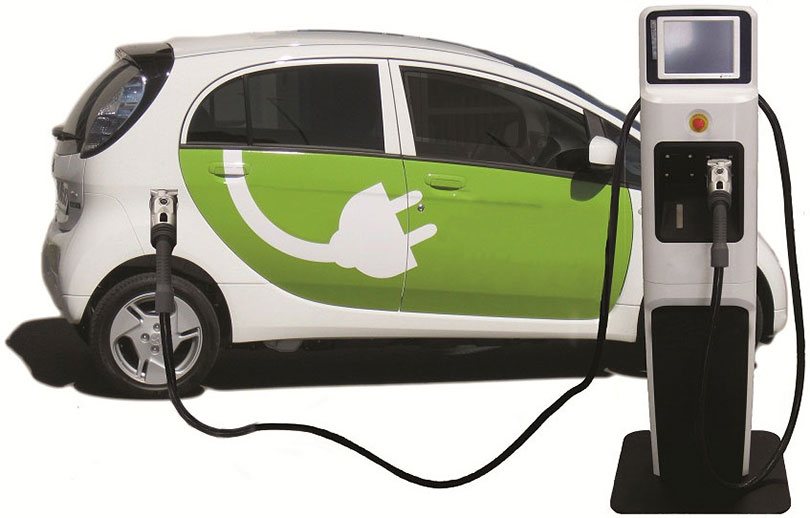
The government had set an ambitious plan in fiscal year 2014/15 to ride 20 percent electric vehicles within five years.
For this, an environmentally friendly vehicle and transport policy was adopted and brought into enforcement the same year to bring at least 25 percent of the total electric vehicles and means of transportation by 2020.

But seven years after the policy was introduced, the number of electric vehicles is less than 2 percent.Not only in the federal government, the Bagmati province government has announced in its policy and programs of the fiscal year 2018/19 to ban the use of petroleum-powered vehicles in the cities, including Kathmandu, Bhaktapur, Lalitpur, Chitwan, Hetauda, Banepa, Dhulikhel and Panauti within next 10 years.
History of electric vehicles in Nepal is four decades old. Trolley bus service was started in Kathmandu in 1979, though it is now closed. Safa Tempo, which has been operating as a public transport since 1993, has a long history, but the number of electric vehicles is low due to lack of priority.

According to the Department of Transport Management, around 3.98 million vehicles have been registered across the country.
It is estimated that only one percent of the total vehicles registered with the Department are running electric vehicles across the country. More than 80 percent electric auto-rickshaws run in Terai /Madhes.
According to the Department of Customs, 12,000 electric vehicles have been imported in the last four and a half years. Around 5,239 electric vehicles were imported in the fiscal year 2017/18, 4,745 in fiscal year 2018/19and only 575 vehicles were imported in the fiscal year 2019/20.
Similarly, the import of electric vehicles had declined to 249 units in the fiscal year 2020/21. In the fiscal year 2020/21, the then Finance Minister Yubaraj Khatiwada imposed a heavy tax on electric vehicles and the import of electric vehicles had come down drastically.
The then Finance Minister Bishnu Poudel reduced the tax imposed on electric vehicles in the budget of the current fiscal year 2021/22 and the import of electric vehicles has been increasing.
In the first six months of the current fiscal year, 1,103 electric vehicles have entered Nepal again. Compared to the last two years, the number of vehicles imported has more than doubled in the first six months of the current fiscal year.
Environment expert Bhushan Tuladhar said that the government has not been able to promote electric vehicles as per the policy even though it has introduced a good policy to promote electric vehicles.
'The policy of promoting electric vehicles has not been implemented due to lack of programs that should have come and invested,'he said.
He claimed that the problem is due to lack of will at the level of implementation even though the environmental policy and rules are adequate. "Willpower is essential at both the political and staff levels," he said.
Spokesperson of the Ministry of Energy, Water Resources and Irrigation Madhu Prasad Bhetuwal said that the promotion of electric vehicles has not been as planned.
'There has also been a promotion of electric vehicles. But it's not as good as we thought it would be. Attraction of consumers towards electric vehicles is gradually increasing,' he said. Spokesperson Bhetuwal said that a positive atmosphere is being created regarding electric vehicles.
'The government has reduced the tax and tariff on the import of electric vehicles as compared to the previous year,' he said.
Sagar Mani Gyawali, assistant manager of Nepal Electricity Authority, said that NEA has been constructing necessary infrastructure, including charging stations at 51 places across the country at a cost of Rs. 380 million.
He said, 'About 70 per cent of the charging station infrastructure has been completed so far. Preparations are underway to complete the construction by the end of this year.'
The NEA is constructing seven stations in Kathmandu alone. A charging station is being built to charge at least six electric vehicles.
'It is time for the government to promote public transport rather than private electric vehicles. Even now, electric vehicles are only available six months after being ordered,"'he said.
Ashish Garg, vice president of Independent Power Producers’ Association, Nepal (IPPAN), said that the government should forward a policy to promote the use of electric vehicles with priority.
President of NADA Automobile Association of Nepal Dhruba Thapa said that the import of electric vehicles has increased as compared to the previous years as the government has taken a policy to promote electric vehicles in the current fiscal year budget.
'Imports of electric vehicles have increased as the government has reduced tariffs and excise duties in the current fiscal year budget,' he said.
He said that the price of electric vehicles has recently come close to that of petroleum-powered vehicles which encouraged consumers to buy electric vehicles.
While the number of electric vehicles is not increasing as per the target, IPPAN is planning to organize a rally of electric vehicles at the Himalayan Hydro Expo.
President Bidya Devi Bhandari is scheduled to inaugurate the Expo on Saturday after the rally, IPPAN said.